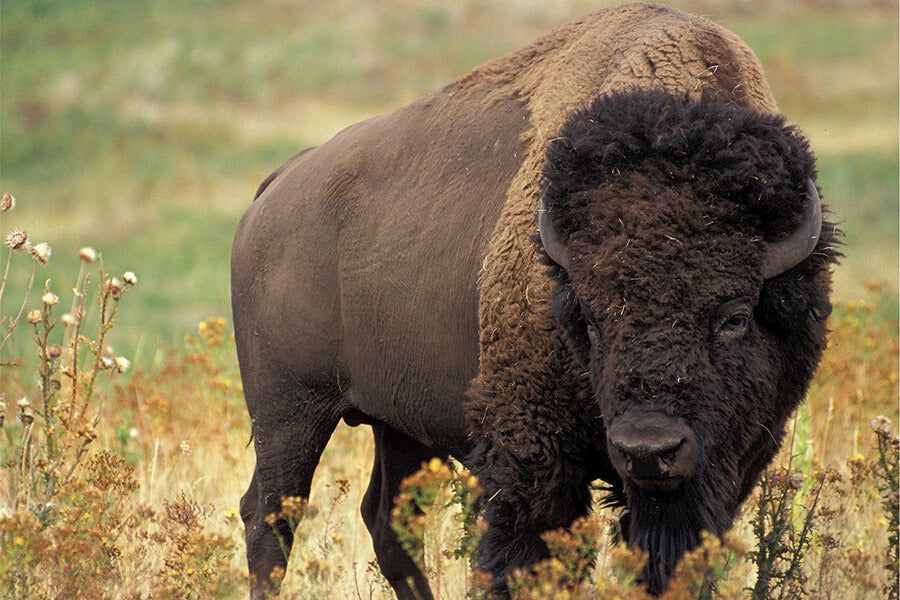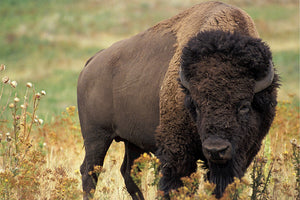So often in history, there are larger-than-life figures who seem closer to fictional characters than real people. Their actions were grander, more extreme, and practically unchecked. This especially applies to the grizzled cowboys, farmers, and trappers who lived in the American west during the 1800’s, the peak of an era of guns, gold, and glory. Their world wasn’t much for law and order or process; it was one of action and grit. But despite all the fanfare it’s received, one of this period’s most fascinating—and surprising—junctures is also one of its least celebrated: the time hunters and ranchers helped save the buffalo.

The hunting business out west was good. Food and game were plentiful, the territory all but boundless as Native Americans were forced further and further from their homelands and stripped of vital resources—especially the buffalo. As the United States government and settlers set their sights on Manifest Destiny, American influence and economic opportunity spread throughout the vast prairies and grasslands of the continent’s heartland. Vast swaths of land were claimed and awarded to eager ranchers, and hunters had practically free rein to kill and collect any wild animals they pleased. To no surprise, their most profitable and primary target was the American bison. But after years of buffalo hunts, men like Frederick Dupree, a South Dakota-based Canadian hunter, realized they had pushed the great beasts to the brink of extinction. In a surprising twist, they began fighting to preserve the same animals they’d made a living off of killing.
South Dakota was at the forefront of 19th century buffalo hunts, and Dupree and his sons were some of the best. Hunting paid well: roughly $80/day according to some estimates, which would be equivalent to over $2,000 today. Business was booming, too—at one point, the Dupree clan killed over 2,000 in a single hunt. But after watching the number of bison dwindle over the years and realizing owning herds was a more sustainable way to make money, he had a change of heart. Instead of hunting these animals until the bitter end, he decided to breed them for the sake of preservation and profit. His timing couldn’t have been better.
In 1884, roughly 325 bison remained in the wild. Desperate for a solution, Congress commissioned the Army to protect the withering herds from poachers. At the same time, Dupree set out alongside his sons and rounded up a handful of cows and bulls for breeding. Their starting numbers were modest—likely less than ten purebred buffalo—but the foundation was set. When he died in 1898, Dupree’s herd had swelled to 83 animals. By then, estimates put the number of bison on private lands at about 700, a welcome sign of much-needed population growth. It also was a strong indicator that Dupree wasn’t alone in his endeavors.
Many legendary outdoor enthusiasts were vital to the preservation and domestication of bison. Two of the greatest were William Temple Hornaday, the leading voice in zoological and animal preservation societies in the 19th century, and Charles “Buffalo” Jones, a boisterous, abrasive, and storied frontiersman who owned America’s largest herd by 1889. An early adopter of breeding beefalo—a hybrid between buffalo and cattle—Jones eventually became the Game Warden of Yellowstone National Park in 1902 before the position was subsequently removed three years laters. But the most prominent supporter of bison restoration was none other than President Teddy Roosevelt. In addition to serving as the honorary president of the American Bison Society (Hornaday was the acting leader of the it), Roosevelt put buffalo preservation on the map while setting up state and national parks around the country. Despite nicknames like “The Rough Rider” and “The Happy Warrior,” Roosevelt is remembered as an ardent wildlife defender in many circles.
Looking back, this chain of events and the people involved are emblematic of the era’s complexity and impact. After all, some of the most accomplished and ruthless hunters made a complete 180 from killing bison to restoring them in just a few years. This about-face wasn’t purely out of the goodness of their hearts, but in the grand scheme, intentions don’t matter—results do. In realizing ranching bison was more sustainable and profitable than hunting them, Dupree, Jones, and countless others helped pivot the fate of bison in America. Had they not, chances are these animals would only be subjects in our history books now.
In the nearly 120 years that have passed since Frederick Dupree died, the number of buffalo in North America has skyrocketed to roughly 500,000—over half of which live on privately owned ranches. While this is a far cry from the tens of millions of bison that once roamed the Great Plains, but it dwarfs the few hundred that were left in the 1880’s. This is a testament to preservationists’ efforts over the years to help these animals flourish rather than flounder. And while there’s still plenty of room to improve how they’re treated, the influence of responsible ranchers and food producers who are advocating for returning these proud animals to their native grasslands is growing by the day. If their efforts persist, the standing of America’s National Mammal will continue to improve by leaps and bounds over the next 120 years.



